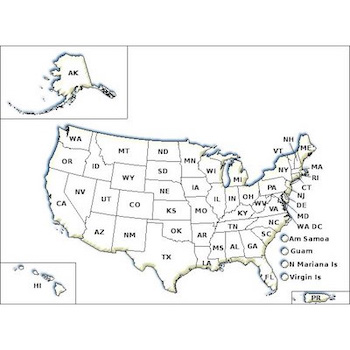Spiders are helpful outdoors because they eat many insect pests. Some spiders use webs to catch their prey, others chase and capture it. Most spiders are shy and harmless to humans. Although all spiders have venom, most cannot bite through human skin. However, a few can deliver very painful, poisonous bites, usually when cornered or agitated. If someone has been bitten by a spider, keep the person calm and contact the Poison Control center at 1-800-222-1222. If you would like help identifying the spiders in or around your home, you may consider contacting your local Cooperative Extension Service.
Control tips:
Outside the home:
- Clean up wood piles and other debris that can create hiding places attractive to spiders.
- Keep shrubs and other items far enough from your home to allow sun and air to penetrate the space between the plants and the house.
- Remove webs from patio furniture, decks, and other items in your yard.
- Insect prey will attract spiders. Use yellow or sodium vapor bulbs for outdoor lighting to reduce the lights' attractiveness to insects.
- In the garden, spiders may be helpful in controlling plant-eating pests. Most spiders do not damage garden plants. Spraying plants with water from a hose is often sufficient to remove spiders from plants prior to harvest.
Inside the home:
- Avoid clutter and control humidity in attics, basements, and other dark areas. Seal stored boxes with tape.
- Vacuum up spiders, egg cases, and webs if you find them inside.
- Spiders typically enter homes through cracks and crevices around the foundation, or doors and windows. Seal or caulk these areas and make sure windows and doors fit tightly.
- Residual pesticides indoors may help control other pests that spiders eat, but they may not provide long-term spider control.
- Read the resources below to learn more about controlling spiders.
If you have questions about this, or any pesticide-related topic, please call NPIC at 800-858-7378 (8:00am - 12:00pm PST), or email us at npic@oregonstate.edu.
Last updated October 14, 2025
- Identify the type of spider(s) before choosing a treatment strategy. Most spiders are
harmless and helpful, eating bugs that wander inside.
- Eliminate insects from the home that serve as a food supply for spiders.
- Vacuum up spiders, webs, and egg cases if you find them inside.
- Cardboard sticky traps may be used to trap and monitor spiders indoors. Place them
along baseboards and under furniture, out of reach of kids and pets.
- To prevent re-infestation, reduce clutter inside and outside to decrease hiding areas.
- Identify and seal up cracks, crevices, and gaps in windows or doors. They may allow
spiders access into the home.
- Trim back all shrubs and plants that directly contact the home.
- Keep grass cut short near the home to decrease hiding areas.
- Remove spiders and webs from plants and yard items with a hard spray of water.
- Use yellow lights outside to attract fewer insects for spiders to feed on.
- If you choose to use a pesticide, read the label before you buy. Try a lower toxicity
product first.
- If you have a pesticide product in mind, have your label handy and click here for information about that product.
These images are graciously allowed to be used by NPIC by Bugwood.org. Images included in the Bugwood Network Image Archives (ForestryImages.org, IPMImages.org, Invasive.org, and InsectImages.org) are made available under a Creative Commons license. Individual photographers retain all rights to images included in the archive.
Through its county agents, the Cooperative Extension Service gives individuals access to the resources at land-grant universities across the nation. These universities are centers for research in many subjects, including entomology (the study of insects) and agriculture. Each county within the United States has an Extension office, which is staffed with agents who work closely with university-based Extension specialists to deliver answers to your questions about gardening, agriculture, and pest control.
Information on Specific Spiders:
Widow Spiders
Brown Recluse Spiders
Hobo Spiders



